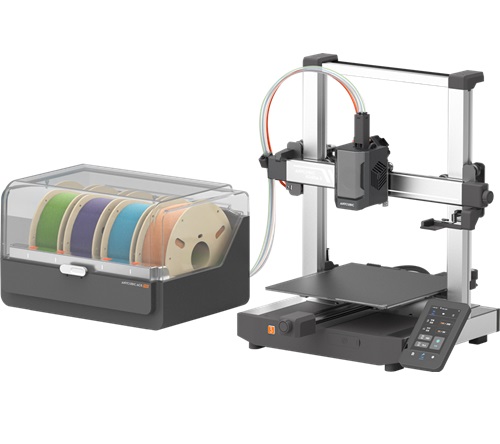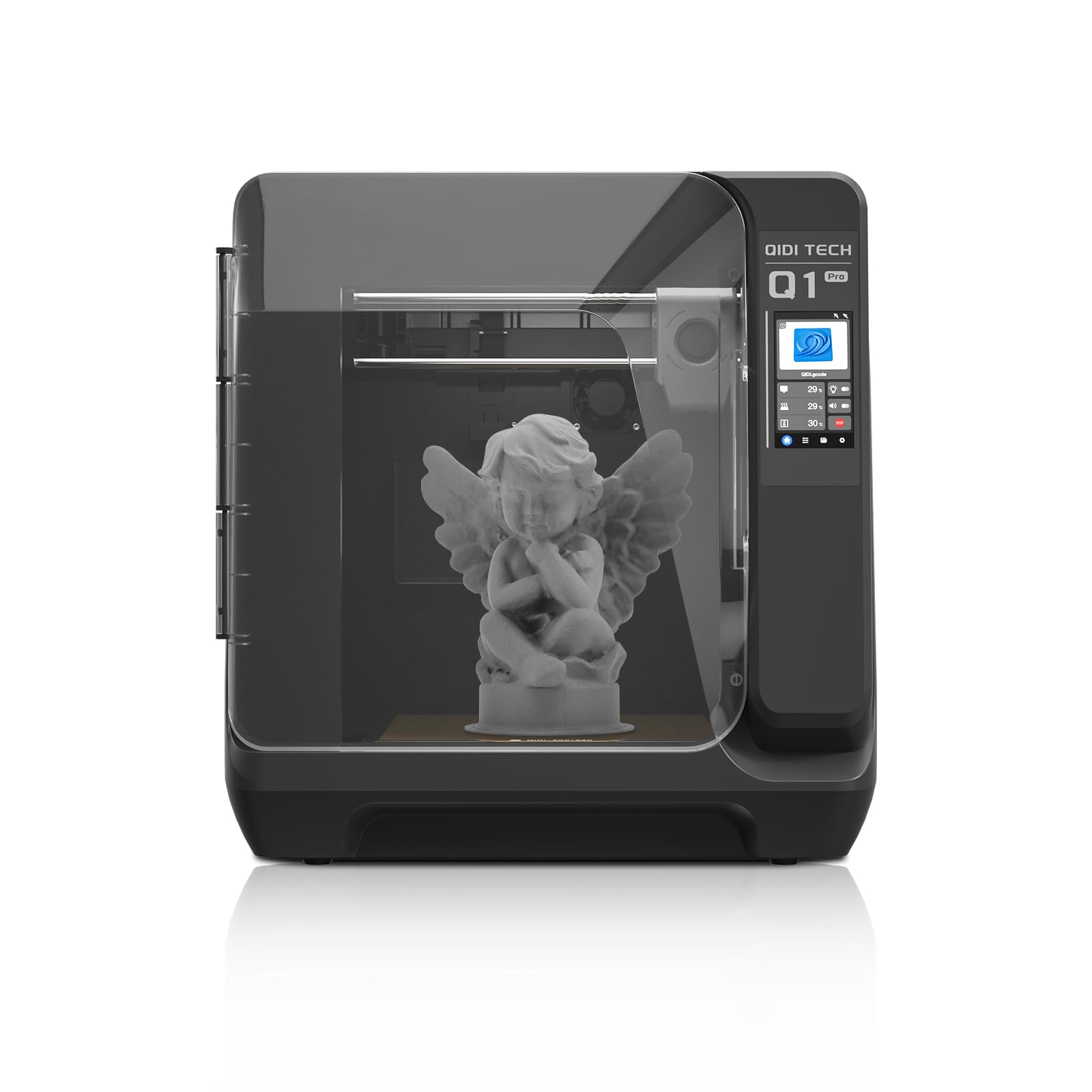Compare Kobra 3 Combo vs Q1 PRO
Comparison between the best 3D printers
Choose the best 3D printer at the best price. The cheapest 3D printers are here.
Buy a 3D printer here with 3D Fila.
 |
 |
|
| Model | Kobra 3 Combo[BUY Kobra 3 Combo] |
Q1 PRO[BUY Q1 PRO] |
| Printing Material | Filament | Filament |
| Buy Filament for Anycubic Kobra 3 Combo | Buy Filament forQIDI Q1 PRO | |
| Estimated price | $349,00 | $449,00 |
| Manufacturer | Anycubic | QIDI |
| Release Year | 2024 | 2024 |
| Print Volume [mm] | 250x250x260 | 245x245x245 |
| Printer Size [mm] | 452x504x483 | 467x477x489 |
| Weight [kg] | 9,2 | 20 |
| Power Loss Recovery | YES | YES |
| Enclosed printer | NO | YES |
| Bed Leveling | Automatic | Automatic |
| Filament End Sensor | YES | YES |
| Bed type | Heated | Heated |
| Power supply system | Direct Drive | Direct Drive |
| Standard nozzle | 0,4 | 0,4 |
| Maximum Nozzle Temperature [°C] | 300 | 350 |
| Maximum Bed Temperature [°C] | 110 | 120 |
| Maximum printing speed [mm/s] | 600 | 600 |
| Filament holder | YES | YES |
| Camera for supervision | NO | NO |
| Recommended filaments | PLA, PETG, ABS, PP, HIPS | PLA、ABS、ASA、PETG、TPU、PC、PA、PA-CF、PET-CF、PAHT-CF etc. |
| Recommended slicers | Anycubic Slicer, Cura, Orca Slicer | QIDI Slicer/Cura/Simplify 3D/ORCA/PRUSA Slicer |
| Maximum Resolution [mm] | 0,1 | 0,1 |
| Processor | 32 bits | Cortex-A53,64-bit Processor |
| Display | Touchscreen 4,3'' | Touchscreen 4,3'' |
| Power Supply | 400 W | 350 W |
| Connectivity | USB, Wi-Fi, Cloud | WiFi/USB Flash Drive/Ethernet Cable |
| Operating systems | Windows, Linux, Macbook | Windows, Linux, Macbook |
| Date of registration in the system | 2024-06-27 | 2024-07-09 |
| Release date | 2024 | 2024 |
| Extra features | The Anycubic Kobra 3 Combo offers advanced features, including multi-filament printing with the ACE (Anycubic Color Engine) system, allowing for quick switching of up to four filaments. It features automatic bed leveling, nozzle clogging detection, and integrated filament drying during printing. The printer supports technical materials such as ABS, ASA, Nylon, and PC, thanks to the hotend that reaches 300°C and the heated bed up to 110°C. In addition, it has a 4.3-inch touchscreen and compatibility with various slicers such as Anycubic Slicer, Cura, and Orca Slicer. | The QIDI Q1 Pro 3D printer stands out for its Core XY structure and heating chambers that reach up to 60ºC, ideal for advanced materials such as ABS and Nylon. It features Klipper firmware, an automatic leveling system, a high-flow extruder with a double metal nozzle and a hotend that reaches 350ºC. It offers connectivity via Wi-Fi, USB and Ethernet, as well as a 1080p camera for remote monitoring and an intuitive touchscreen for easy operation. |
| Support for multiple colors and materials (AMS and CFS) | YES | NO |
Notes * |
||
| Cost-benefit | 8 / 10 | 8 / 10 |
| Hardware | 4.5 / 10 | 5.4 / 10 |
| Tela | . | . |
| Print volume | 4 / 10 | 3 / 10 |
| Performance | 5 / 10 | 5 / 10 |
| [BUY Kobra 3 Combo] | [BUY Q1 PRO] |
Conclusion |
| In comparing the Anycubic Kobra 3 Combo and the QIDI Q1 Pro, both 3D printers are closely matched in terms of price and performance, making them strong contenders in the market. The Kobra 3 Combo offers a slightly larger print volume and the ability to switch between multiple filaments easily, making it a versatile option for various materials while catering to novice users with its user-friendly features. Its emphasis on support for a wide range of filaments like PLA, ABS, and Nylon adds to its appeal for hobbyists looking to experiment. On the other hand, the QIDI Q1 Pro shines with its enclosed structure and advanced features such as a higher maximum nozzle temperature and the ability to handle more technical materials due to its improved heating capabilities. Its Core XY design also provides greater stability and speed, making it suitable for more complex and professional projects. Additionally, the inclusion of a remote monitoring camera adds convenience for users looking to oversee their prints from a distance. Both printers are equipped with automatic bed leveling and filament end sensors, ensuring a more reliable printing experience. Preference for one over the other may ultimately depend on the specific needs and intended use cases—whether one prioritizes versatility and ease of use (Kobra 3 Combo) or advanced material capabilities and professional features (QIDI Q1 Pro). In conclusion, potential buyers should weigh their specific printing requirements, the types of materials they intend to use, and the importance of additional features like enclosure and monitoring when choosing between these two solid 3D printer options. |

